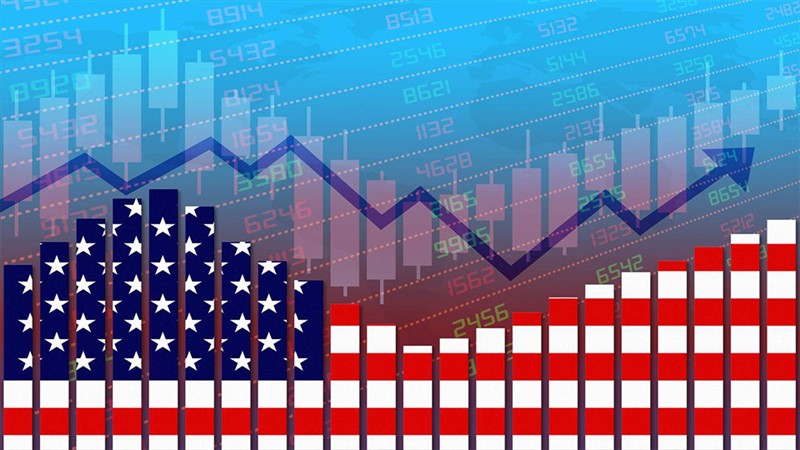2023.02 The Taiwan Banker NO.158 / By Wei Xi-bin
Overview: A new turning point in the war between hawks and dovesBanker's Digest
When it came to macroeconomic trends of 2022, most people felt a sense of shock or astonishment. There is little agreement to be found among economists regarding 2023 forecasts for advanced economies like the US, Europe, and UK. Some believe inflation has already been tamed: “If there’s stagnation, there’s no inflation.” They predict Federal Reserve rate hikes to come to an end after reaching 5%, weak economic growth (or even a small recession), and a soft landing. However, others believe the Fed could be more hawkish, strongly raising interest rates to combat inflation, and seriously harming the economy in the process, but without prolonging the agony. The war between hawks and doves is reaching a turning point.Danger of stagflation seems to have passedGlobal economic fluctuations are driven by US monetary policy; investors often wait with bated breath for the release of US data. Recently, some economists have spoken of stagflation, but the danger of stagflation seems to have broadly passed. In June 2022, the Consumer Price Index (CPI) jumped to 9.1%, which made for a touch-and-go moment with the economy having faltered in the first half of 2022. After mid-2022, US commodity price growth appeared to slow, and inflation should have followed. However, when determining monetary policy, the Fed primarily refers to the rate of change in the Personal Consumption Expenditure (PCE), which can be divided into three parts: ordinary goods, residential services, and non-residential services. Prices of ordinary goods have continued to slide, but residential services (primarily rent) needs time to reflect drops in newly-signed contracts, owing to longer-than-normal contract periods, so the overall trendline will continue to rise, although the Fed has determined it will decrease this year. Inflation in the troublesome third element of the PCE index, non-residential services, has fluctuated for the past few months, still without an obvious trend. As services are a labor-intensive sector, US labor is once again in high demand, with the unemployment rate dropping to a historic low and salaries continuing to rise. Therefore, its effect on commodity prices is particularly noteworthy. A number of economists have also predicted that inflation will dip below 5% during 2Q. The only concern lies in the labor market, namely the difficulty of increasing labor force participation and alleviating a shortage of approximately 10 million workers. Although the tech industry’s hiring frenzy has already begun to slow, major corporations such as Goldman Sachs, Meta, and Amazon have either planned or initiated a series of layoffs. Yet, the service sector’s demand for labor is strong, especially in entertainment, transportation, and retail, where a tense relationship with the labor market persists. The inevitable corrections in the labor market will be difficult, and a slowdown may not necessarily precipitate improvement. Inflation driven by rising labor costs, unlike that driven by commodity prices, will not be so easy to reverse. Fear of labor shortages In his latest speech, Fed Chairman Jerome Powell raised the question of whether the factors behind the labor shortage are ongoing – namely an aging population, income inequality, and excess savings. None of these long-term structural problems are easily solved and may be important variables affecting the future economy.Having yet to completely resolve inflationary pressures, interest rates could average around 5% for the year, about where they were in mid-2006, just prior to the subprime mortgage crisis, and tying for a twenty-year high. Going back far enough, however, these rates do not seem so high: 5% was considered low prior to 2000.However, the Fed cannot rest easy after simply controlling commodity prices. Monetary policy requires time, and today’s adjustments will not cause everyone to reduce their investment and consumption tomorrow; the impact of hikes on the real economy will appear only gradually. In 2022, the US, Europe, and UK drastically raised rates in the hopes of suppressing commodity prices, subsequently battering this year’s economic performance. Inflationary pressure has fallen in these major countries, but now the economy has stagnated.The Taiwanese economy may be somewhat different. In contrast to the US, Taiwan raised its rate to only 0.625% in 2022. Some worry that the rate spread could lead to capital outflows, threatening the economy and the financial markets. However, a certain gap has always existed between Taiwan and US rates. In the long run, if the situation does not change, businesses and investors will adapt accordingly, and commodity prices and interest rates will not swell as much as they have in the US. Taiwanese commodity price and interest rate fluctuations in 2023 will still be relatively mild compared to those in the US. According to the Directorate General of Budget, Accounting and Statistics, this year’s CPI year-on-year increase will be only around 1.86%, which is still lower than the levels targeted by the Fed and ECB. If this forecast is correct, then the central bank does not have a strong imperative to raise rates. A large disparity exists between forecasts of foreign and domestic performance. Seeing as the pandemic is already beginning to subside, domestic demand should begin to recover, ignited by the NT$ 6,000 stimulus grants. However, when it comes to exports, things are less optimistic. ICT products are Taiwan’s chief export. After growth slowed in the US and Europe, overseas markets found themselves unable to expand, leading to lukewarm sales. Moreover, the past several years of the pandemic have seen lifestyle and work habits change. As demand for electronics increased, stockpiling became common, and electronics supply chains are being pressured to consume their reserves. In the end, while the US economic situation is not fantastic and inflation rates will not immediately return to below 2%, there is no need to be pessimistic. The public’s long-term inflation expectations are still not high, and after the Fed’s drastic rate hikes last year, there should be room to lower rates in response to economic deterioration. For Taiwan’s part, following electronic manufacturers’ sales miss in December of 2022, stock prices should make a strong comeback, although it is still unclear whether they’ve yet reached their bottom. Everyone is hoping to be pleasantly surprised by the Year of the Rabbit, but the economy is hard to predict. When the Fed pivots towards lowering rates, both the economy and stock market may be worse off.


